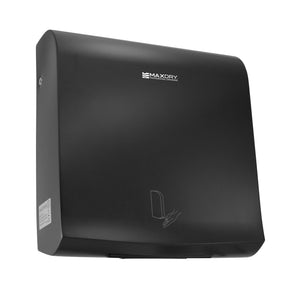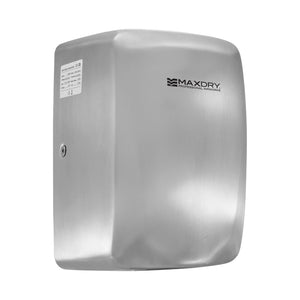Exploring Common Indoor Air Pollutants
Indoor air quality (IAQ) is a vital aspect of maintaining a healthy and comfortable living environment. We've already discussed its significance, and now, let's delve into the world of common indoor air pollutants. These air contaminants can originate from various sources within your home and can have a significant impact on your health and well-being.
Household pollutants, such as dust, pet dander, and pollen, are often lurking in the air, triggering allergies and respiratory issues. From their sources to their potential health effects, we'll delve into the world of common indoor air pollutants, equipping you with the knowledge needed to ensure a healthier, safer indoor atmosphere for you and your loved ones.
Where Do Indoor Air Pollutants Come From?
Did you ever wonder, 'What are common indoor air pollutants?’ Common indoor air pollutants encompass a wide array of substances that can significantly impact indoor air quality. Among these, allergens emerge as particularly troublesome culprits. These allergens include minute particles such as dust mites, pet dander, and pollen, and their sources are varied:
- Dust Mites: These microscopic creatures thrive in household dust, particularly in bedding, mattresses, and upholstery. Their waste particles and shed skin can become airborne, leading to allergic reactions and respiratory distress.
- Pet Dander: Comprising tiny, lightweight particles of skin, hair, and feathers shed by pets like cats and dogs, pet dander can remain suspended in the air for extended periods. This persistence can pose a challenge for individuals with allergies, even if they don't own pets themselves.
- Pollen: Pollen particles are introduced into indoor environments primarily through outdoor air infiltration. People unknowingly carry pollen indoors on their shoes and clothing, especially during allergy seasons. Once inside, these particles contribute to indoor air pollution and can trigger allergies.
Additionally, it's worth noting that dust particles, often laden with allergens, are carried by air currents and can settle on various surfaces within your home. However, they can easily become airborne again when disturbed, perpetuating the cycle of indoor air pollution. Understanding the sources of these common indoor air pollutants is essential for effectively managing and improving indoor air quality.
Air Pollutants Beyond Allergens
Indoor air pollutants, however, aren't limited to allergens. They also encompass a range of other substances that can profoundly affect your well-being.
- Volatile Organic Compounds (VOCs): These are chemicals emitted by various household products such as paints, cleaning agents, and air fresheners. VOCs can have both short-term and long-term health effects. Short-term exposure can result in eye and respiratory irritation, headaches, and a general feeling of discomfort. Over the long term, continuous exposure to VOCs may lead to more serious conditions, including respiratory diseases and even an increased risk of certain cancers.
- Carbon Monoxide (CO): Often referred to as the "silent killer," carbon monoxide is a colorless, odorless gas that can be produced by faulty or improperly vented appliances like stoves, heaters, or fireplaces. When inhaled, CO binds to hemoglobin in the bloodstream, reducing its ability to transport oxygen. Even low levels of carbon monoxide exposure can lead to symptoms like dizziness, nausea, and confusion. Prolonged exposure or high concentrations can be life-threatening, causing loss of consciousness and death. Properly maintaining and ventilating gas-burning appliances is crucial to prevent CO buildup and its severe health risks.
- Formaldehyde: Found in building materials, furniture, and some fabrics, formaldehyde is another indoor air pollutant with potential health consequences. It is often released into the air as a gas, particularly when these materials are new. Short-term exposure may lead to eye, nose, and throat irritation, while long-term exposure is associated with an increased risk of respiratory problems, including asthma. Reducing formaldehyde exposure involves selecting products with low formaldehyde emissions and ensuring proper ventilation in enclosed spaces.
Understanding these common indoor air pollutants beyond allergens is essential for creating a healthier indoor environment.
How Do Indoor Air Pollutants Affect Health?
As mentioned earlier, health effects of indoor air pollutants can range from mild irritation to severe respiratory issues. VOCs can cause headaches and eye irritation, while exposure to mold spores can lead to allergies and asthma. Prolonged exposure to high levels of pollutants can even increase the risk of cardiovascular diseases and certain cancers.
What Are the Symptoms of Poor Indoor Air Quality?
Recognizing the symptoms of poor indoor air is crucial. If you experience frequent headaches, dizziness, fatigue, or respiratory issues when indoors, it may be a sign of poor IAQ. Allergy-like symptoms such as sneezing, coughing, and watery eyes can also indicate a problem.
How Can I Test Indoor Air Quality at Home?
Testing indoor air quality is a practical step towards a healthier living space. Various indoor air quality testing kits are available, allowing you to assess pollution levels and identify specific issues. These kits often come with easy-to-follow instructions and may include air sampling devices, chemical test strips, or electronic sensors, depending on the parameters you want to measure. Once you've collected your samples or readings, you can send them to a laboratory for analysis or use the included tools to obtain immediate results, depending on the kit.
Reducing Indoor Air Pollution: Steps Towards a Healthier Home
Taking proactive measures to reduce indoor air pollution is essential for maintaining a healthier living environment. Here are several practical steps you can implement to improve your IAQ:
- Proper Ventilation and Its Impact on IAQ: Let's understand how ventilation impacts indoor air quality. Adequate ventilation ensures a constant supply of fresh outdoor air and removes stale indoor air. Proper ventilation not only helps in diluting air pollutants but also brings in oxygen, enhancing the overall freshness of your indoor environment.
- Cleaning Practices: Regular cleaning practices are fundamental to minimizing pollutants. Dusting and vacuuming surfaces help reduce the buildup of allergens such as dust mites, pet dander, and pollen, positively affecting IAQ.
- Air Purifiers: Air purifiers equipped with High-Efficiency Particulate Air (HEPA) filters are effective tools for removing contaminants from the air. These filters can capture tiny particles, including dust, mold spores, and even some bacteria and viruses. Air purifiers can be particularly helpful for individuals with allergies or asthma, as they provide an additional layer of defense against indoor air pollutants.
- Low-VOC Products: When selecting household products such as paints, cleaning agents, and furnishings, opt for those labeled as low-VOC. These products release fewer harmful chemicals into the air, contributing to better IAQ. Additionally, consider using fragrance-free or naturally scented products to minimize the introduction of synthetic fragrances, which can also be sources of indoor air pollution.
- Air-Purifying Plants: Wondering which plants can help purify indoor air? Some plants, like snake plants and spider plants, are known for their air-purifying qualities. Incorporating these green allies into your indoor spaces can not only enhance aesthetics but also contribute to better IAQ.
- Regular HVAC Maintenance: Ensure that your heating, ventilation, and air conditioning (HVAC) system is regularly inspected and serviced. Clean and change air filters as recommended to prevent the recirculation of air pollutants.
- Control Humidity Levels: Maintain appropriate indoor humidity levels to prevent mold growth and dust mite proliferation. Dehumidifiers and humidifiers can help regulate moisture levels as needed.
In our quest for a healthier indoor environment, we've explored common indoor air pollutants, from allergens like dust mites, pet dander, and pollen to hidden threats like VOCs, carbon monoxide, and formaldehyde. We've discussed symptoms of poor indoor air quality and the importance of testing. Our journey to cleaner indoor air includes practical measures like ventilation, cleaning, air purifiers, and air-purifying plants, empowering you to create a healthier, more comfortable home.
Related Products
-
ThinMAX High Speed Hand Dryer - Black Coated Stainless Steel

- Regular price
- $427.60
- Sale price
- $427.60
-
SpaceMAX High-Speed Vertical Hand Dryer, Brushed Stainless Steel (Satin)

- Regular price
- $279.50
- Sale price
- $279.50



